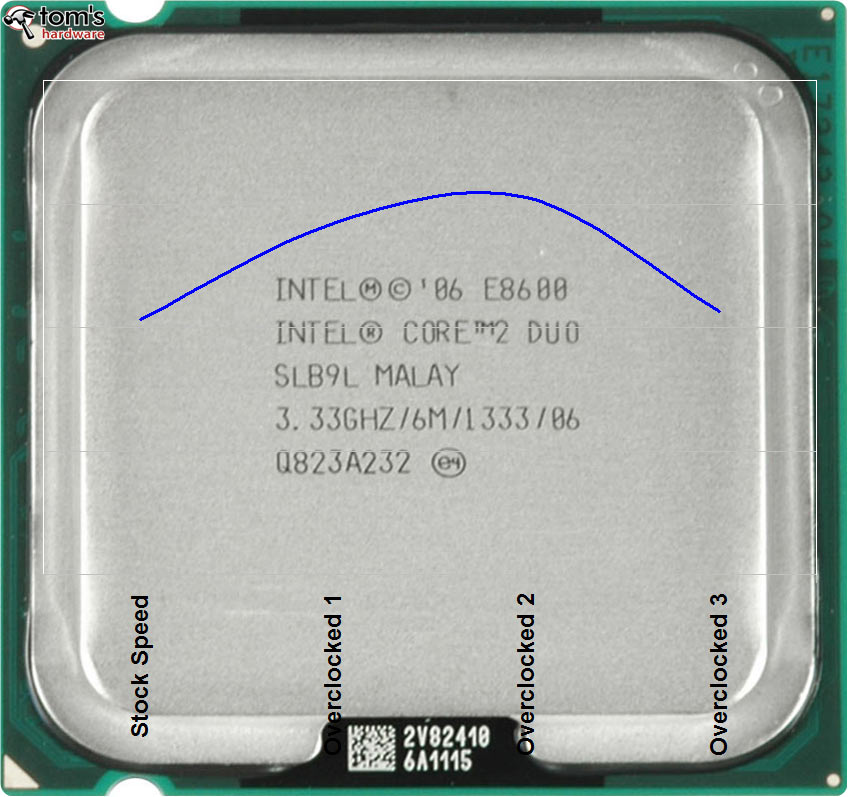Overclocking Core 2 Duo: Power Versus Performance
Perfect Overclocking: Balanced Power And Performance
Editor's Note: Happy Friday evening, all. Last month, we gave you two stories about finding the best balancing between performance and power consumption while overclocking Core i7 and Phenom II processors (linked below). Not wanting to leave Core 2 owners out in the cold, we prepared this piece as well. The motherboard used to run the tests isn't available for sale in the US, though, so I'm putting it up tonight as weekend reading. The results are still valid, and you should expect to see very similar results from P45-based platforms more readily available locally.
Overclocking remains the most popular way of tweaking and tuning for performance. After all, it's able to serve up tons of extra performance at no extra cost. However, there are limits to overclocking if you care about maintaining a reasonable balance between performance and power consumption—additional clock speeds result in much higher power consumption. We took a P45 motherboard from MSI and a Core 2 Duo E8600 processor and found the answer to the following question: What is the best clock speed for this Core 2 Duo processor?
If the title of this one looks familiar, it's because we've already conducted this same experiment with Core i7 and Phenom II processors. If you missed those explorations, feel free to check them out as well.
P45 and Core 2 Duo Are Still Around
Although everyone in the performance circles seems to be talking about the Intel Core i7 and AMD Phenom II processors, the good old Core 2 Duo—with its efficient dual-core design—will remain popular for many months to come. Although the competing Intel quad-core CPUs offer significantly better performance, they are more expensive and typically require new motherboards as well as DDR3 memory.
This will also be the case for Intel’s upcoming product refresh, as the 5-series chipset (Ibex Peak) will introduce Socket LGA 1156 and new processors: the Lynnfield quad-cores. The result will be improved performance, which we expect to fill the gap between Core 2 Quad and Core i7, but the platform will not be significantly more efficient than a Core 2 Quad configuration—just slightly more expensive. Ibex Peak clearly is about features and innovation, first and foremost. For these reasons, Core 2 Duo will remain attractive for a while. Also, consider that many applications still don’t benefit from multiple processing cores (and many don’t even need more than two for speedy execution).
Platforms? Mature Hardware Available
Get Tom's Hardware's best news and in-depth reviews, straight to your inbox.
We looked around a bit to find a suitable platform for this overclocking project, and found a significant number of feasible options. A plethora of high-end motherboards in the $200 price area are certainly great, but spending so much would not have been in keeping with our goal of a reasonable platform cost. Instead, we decided to use a mainstream P45 motherboard, which we found in the MSI portfolio. The P45D3 Neo is a middle-class P45 motherboard; it isn’t loaded with features that most mainstream users probably wouldn’t use, but still offers the overclocking support we wanted. The better-equipped P45D3 Platinum would have been our choice for quad-core CPUs, but this overclocking project ran just fine on the Neo.
Current page: Perfect Overclocking: Balanced Power And Performance
Next Page Processor: Core 2 Duo E8600